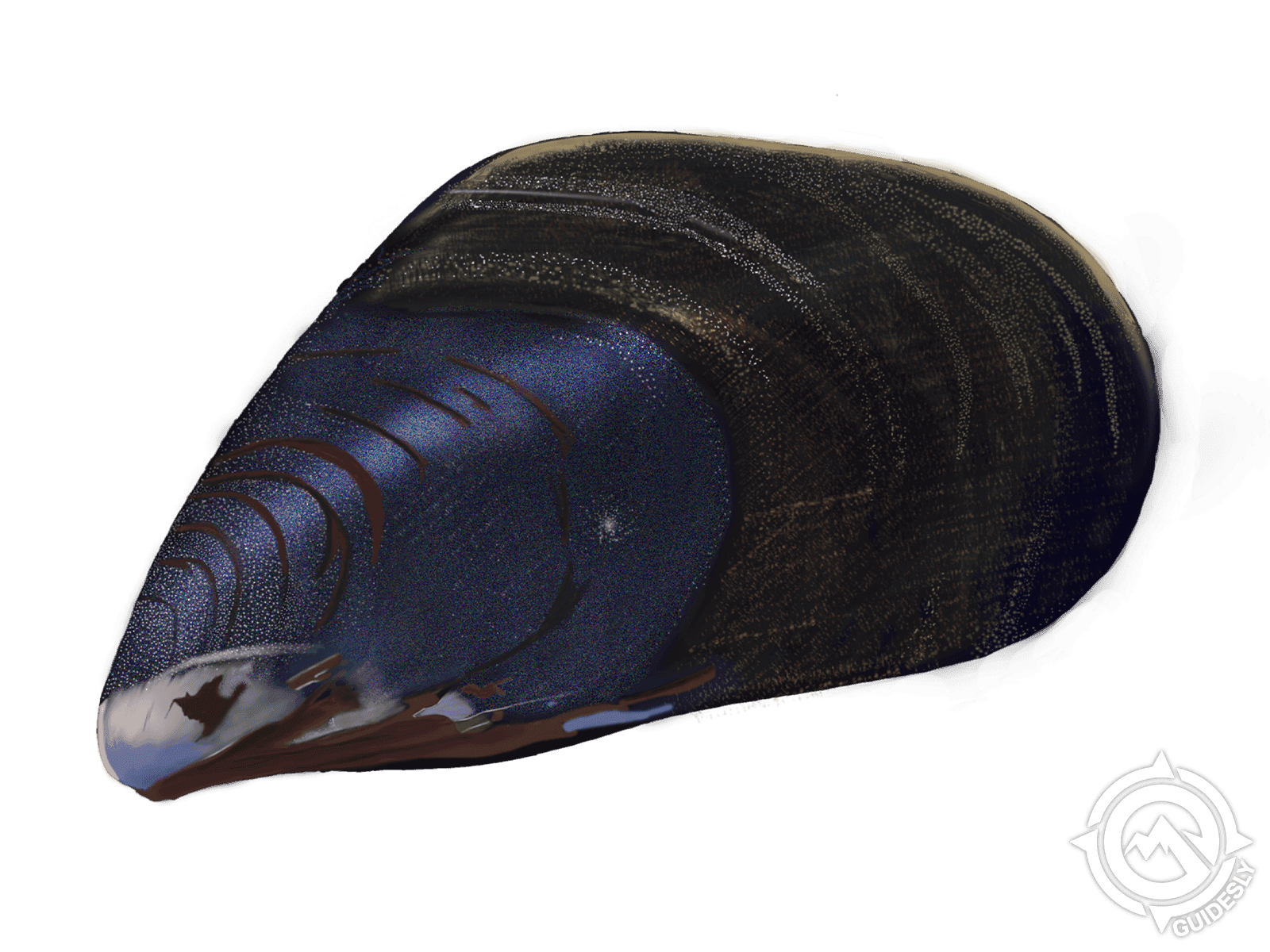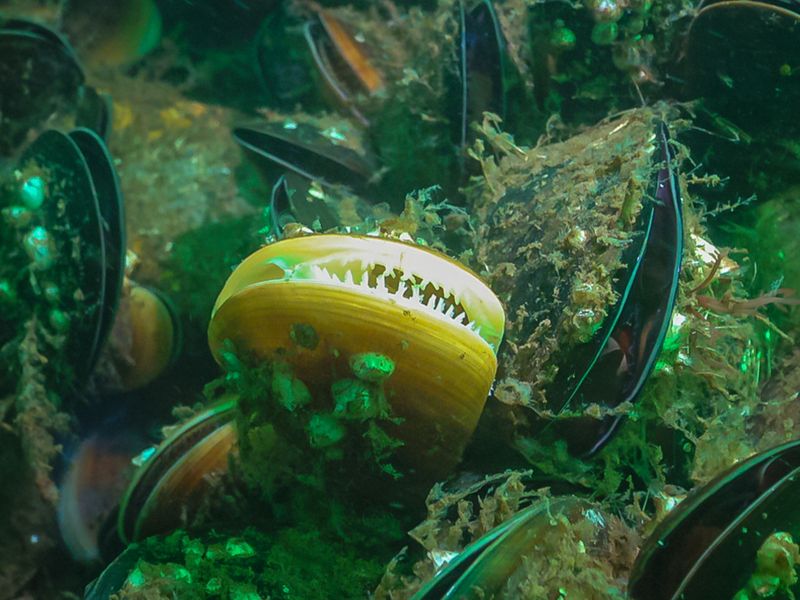Mediterranean Mussels

Species Details
Mytilus Galloprovincialis
Mytilidae
Mytilida
Sea, coastal waters
0 - 0 lbs.
2" - 3"
What Makes These Mussels Thrive In Both Water Types?
They are highly adaptable and can thrive in both salty and brackish waters. This makes them resilient in various environments, from the open ocean to coastal lagoons and estuaries.
About Mediterranean Mussel
The Mediterranean mussel, scientifically known as Mytilus galloprovincialis, is a fascinating marine bivalve mollusk. These mussels are renowned for their delicate flavor and their significance in marine ecosystems. In this article, we'll delve into the habitat, distribution, and diet of Mediterranean mussels, providing a comprehensive understanding of these intriguing creatures.
Understanding the Habitat of Mediterranean Mussels
Mediterranean mussels thrive in various marine environments, ranging from sheltered bays to rocky coastlines. They are predominantly found in the intertidal and subtidal zones, where they attach themselves to firm surfaces such as rocks, piers, and boat hulls. These mussels utilize a strong byssus, which is a collection of silky filaments, to anchor themselves securely in place.
Ideal Living Conditions
The ideal habitat for Mediterranean mussels includes areas with moderate to high salinity levels and temperatures ranging from 10 to 25 degrees Celsius. They can tolerate a wide range of environmental conditions, which contributes to their widespread distribution.
Role in the Ecosystem
Mediterranean mussels play a vital role in marine ecosystems. They act as natural filters, cleaning the water by feeding on plankton and organic particles. This filtration process not only improves water quality but also supports the health of other marine organisms.
Distribution of Mediterranean Mussels
Mediterranean mussels are native to the Mediterranean Sea, but their distribution extends far beyond this region. Due to human activities such as shipping and aquaculture, they have successfully colonized various parts of the world.
Native Range
The native range of Mediterranean mussels encompasses the entire Mediterranean Sea, from the coastlines of Southern Europe to Northern Africa. They are also found along the Atlantic coasts of Spain and Portugal.
Global Spread
These mussels have been introduced to other parts of the world, including North and South America, Asia, and Australia. In some regions, they are considered an invasive species due to their rapid spread and ability to outcompete native marine life.

Diet of Mediterranean Mussels
Mediterranean mussels are filter feeders, which means they obtain their food by filtering water through their gills. Their diet primarily consists of plankton, microscopic algae, and detritus.
Feeding Mechanism
The feeding process begins when mussels draw in water through their incurrent siphon. As water passes over their gills, tiny hair-like structures called cilia trap plankton and other food particles. The food is then transported to the mussel's mouth, where it is ingested.
Importance of Diet
The diet of Mediterranean mussels is crucial for their growth and reproduction. A rich supply of plankton supports their rapid development and ensures their role as a keystone species in marine food webs.
The Life Cycle of Mediterranean Mussels
Understanding the life cycle of Mediterranean mussels provides insight into their growth and reproduction patterns.
Reproduction
Mediterranean mussels have a reproductive strategy known as broadcast spawning. During the breeding season, which typically occurs in spring and summer, males and females release sperm and eggs into the water column. Fertilization occurs externally, and the resulting larvae develop in the plankton before settling onto a suitable substrate.
Growth and Development
The larvae undergo several developmental stages before transforming into juvenile mussels. Once they settle, they begin to grow and develop their characteristic shells. Mediterranean mussels can reach maturity within a year, depending on environmental conditions.
Human Interaction and Economic Importance
Mediterranean mussels hold significant economic value, particularly in the aquaculture industry. They are cultivated in many regions for their culinary appeal and nutritional benefits.
Aquaculture Practices
Mussel farming involves cultivating mussels on ropes or other structures suspended in the water. This method provides an efficient way to produce large quantities of mussels while minimizing environmental impacts. Mediterranean mussels are prized for their taste and are a popular seafood choice in many countries.
Culinary Uses
In the culinary world, Mediterranean mussels are celebrated for their tender meat and rich flavor. They are often steamed, grilled, or used in a variety of dishes such as pasta, paella, and seafood stews.
Environmental Considerations
While mussel farming is generally considered sustainable, it is essential to monitor and manage aquaculture practices to prevent potential ecological impacts. Responsible farming ensures the protection of natural mussel populations and their habitats.
Conservation and Future Outlook
As with many marine species, Mediterranean mussels face challenges due to environmental changes and human activities.
Threats to Mediterranean Mussels
Pollution, climate change, and habitat destruction pose significant threats to Mediterranean mussels. Changes in water temperature and salinity can affect their growth and reproduction, while pollution can impact their health and survival.
Conservation Efforts
Conservation efforts focus on protecting the natural habitats of Mediterranean mussels and implementing sustainable aquaculture practices. Research and monitoring programs help assess the health of mussel populations and address potential threats.
Future Prospects
The future of Mediterranean mussels depends on our ability to balance human activities with the conservation of marine ecosystems. By promoting sustainable practices and raising awareness about the importance of these mussels, we can ensure their continued presence in our oceans.
In conclusion, Mediterranean mussels are remarkable marine organisms with a rich ecological and economic significance. Understanding their habitat, distribution, and diet sheds light on their role in marine ecosystems and highlights the importance of their conservation. As we move forward, it is crucial to protect these valuable resources for future generations.







